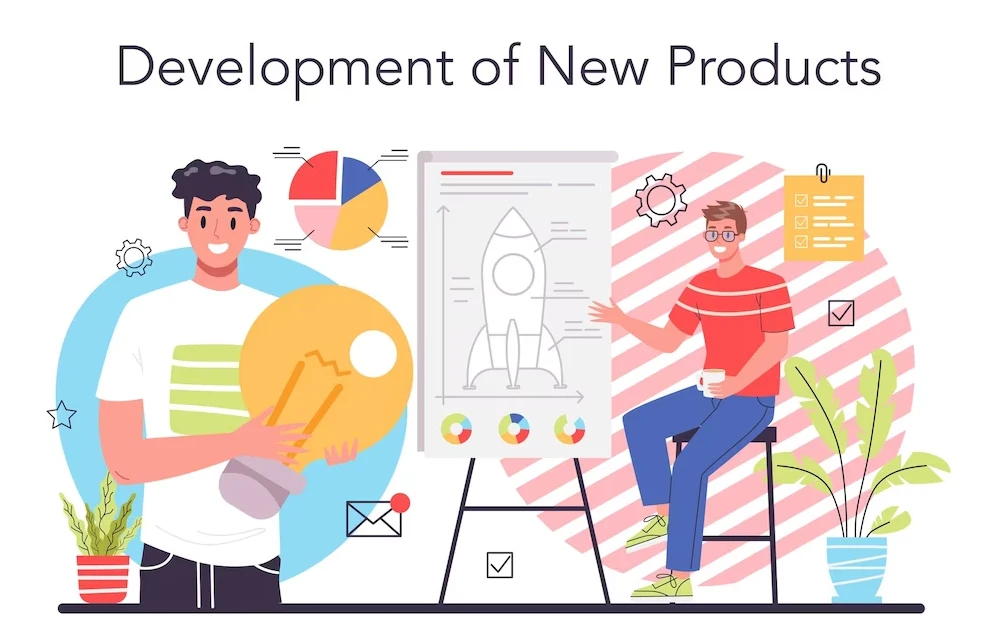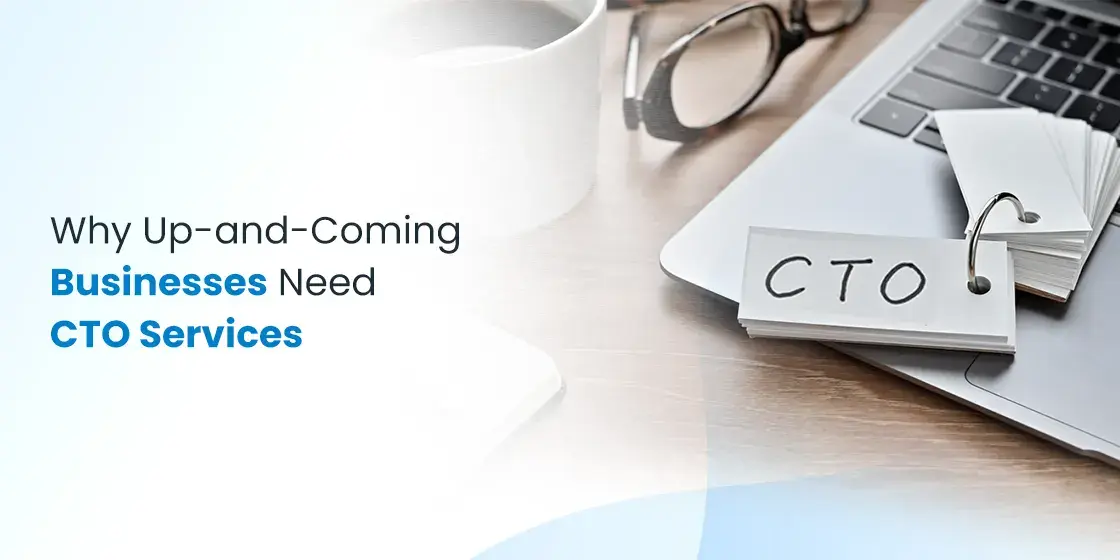Table of Content
Discover the Purpose and Roles of a CTO, From Full-Time CTOs to CTO as a Service
With technology today evolving constantly, businesses are finding it difficult to keep up with the rising changes. That provides an opportunity for the competitions to swoop in and capture your consumers. CTOs, or Chief Technology Officer, is a role that is fulfilled by someone who helps guide you on the tech stack, as well as individual technologies that can be used to make your product the better option.
Now, any type of organization may find it difficult to cope without a CTO, whether it’s a small startup or a larger corporation looking to grow. However, they may not have the need for, or afford a full-time internal Chief Technology Officer. So what are they to do then? Well, for organizations with minimum, sporadic, or even one-time CTO needs, they can opt for the CaaS model.
So what is CaaS, or CTO as a Service? Let’s discover the importance and need for a CTO, and find out why software services companies are now offering CaaS as part of their dedicated development teams services.
The Purpose of a CTO in an Organization

Let’s start the discussion with understanding what purpose a CTO serves in an organization.
A CTO, or Chief Technology Officer, is a resource that helps an organization meet its technical needs, finding the perfect balance between operations and R&D for the startup’s growth. It is their job to predict and assess both short-term and long-term needs of your business, and utilizes the budget in such a way as to help the company achieve both.
When it comes to reporting, the CTO reports to the CIO, or the Chief Information Officer. People often confuse the roles of CIO and CTO, but there are a number of differences between the two. However, depending on the size and nature of the startup or organization, they might report directly to the CEO as well.
Now, depending on the stage or business need of your organization, a CTO serves different purposes, which we will elaborate later.
CTO as a Service – What is CaaS?
Now that we have taken a look at what a CTO does, you might be wondering about the concept of CaaS, or CTO as a Service. Well, what is CaaS, and what does it do? Let’s find out.
Essentially, CaaS offers startups and organizations the option to benefit from a CTO’s services and advice related to business and technical aptitude for their startup, only for the time they need it. So for example if they do not have a CTO currently, or cannot afford one full time, then they can use CaaS to hire the services of one for as much time as they can afford to. Alternatively, they may hire them for specific, one-time services.
Now, let’s suppose your company neither has a CTO, nor does it know what to look for. What are they to do then? Well, they can outsource this job to a recruitment service who can hire a CTO as per your organization’s needs.
Types of CTO Services for Startups and Organizations

So far, we have discussed the purpose of a CTO, as well as what CaaS offers an organization that doesn’t have a CTO. Suppose that your organization has decided to opt for CaaS. However, you find out there are multiple types of CTO services that can be availed. So which one should you choose? Let’s find out.
Full Time Internal

The first, and most obvious kind, is the full-time internal CTO. Organizations can opt to hire and bring onboard a CTO that would work in-house with their teams and c-suite to ensure that all technological needs are met.
Besides technical expertise, the in-house CTO also offers a variety of services. They include business development acumen, portfolio-level planning expertise, and soft management skills that would help your business grow.
However, this is also the most expensive form of CTO services, which can be a problem for small companies or startups. Those expenses include office space for the CTO, HR and onboarding expenses, employee benefits, and much more.
One Time CTO Services
This type of CTO services are better suited for projectized companies than it is for functional companies. In such organizations, you can hire the CTO for a one-off project or process, thus getting exactly as much out of the CTO as required, without having to pay the resource for a full-time position.
Full Time Offshore

In case a full-time CTO is what you require, but cannot afford the cost of hiring one internally, then looking for one offshore is the next best solution. This is ideally the best cost vs potential option in the list of CTO services, as you get the benefit and expertise of a full-time CTO, at a fraction of the cost of an internal resource.
Most of the time, the pay scale for offshore employees is far lesser than that of internal employees, due to lower costs of living in many of these countries. Moreover, you do not have to pay for benefits like a 401(k) or insurance, which brings the cost down significantly.
Finally, as they work remotely, you do not need to have office space, utilities and more arranged for them, which brings the cost down even more.
Interim CTO Services
Now, what if you need a CTO to support your in-house CTO or c-suite on a big project, temporarily? Which CTO services should you opt for then? Well, you should opt for an interim CTO. These CTOs are designed to be brought on temporarily, in order to aid your primary CTO or c-suite in implementing some new endeavor successfully. This allows your in-house resources to focus on the core parts of that project, while the supplementary parts can be handled by the interim CTO.
Part Time Offshore

Let’s say that you do not require a full-time CTO. So why not opt for a part-time offshore resource? These employees would work the contract-stipulated hours, in the period specified. That way, your organization can work with the CTO and benefit from what they have to offer in the specified time. So, it helps you save costs, while also giving you the benefit of having an experienced CTO on the team. And hiring one can be as easy as signing up with a Team-as-a-service offshore company.
What Type of CTO Do You Need? A Breakdown by Startup Growth Stage

Knowing the type of CTO services is a great start towards hiring one for your organization. However, there is one other distinction that you need to consider before finding the CTO that suits your needs.
The duties and roles undertaken by a CTO can be broadly categorized among three distinct groups, which are based on the business phase that a startup is currently at. For example, if the startup is just established, and is looking to deliver proof of concept to secure the second round of funding, the responsibilities of a CTO will be much different than that of a CTO who is helping an established startup looking to grow.
So, let’s look at the different stages, and find out what roles and responsibilities a CTO has to fulfill over there.
Proof of Concept/Prototype Stage

The first set of roles and responsibilities that a CTO might be asked to fulfill, is that at a startup in the prototype stage. The primary responsibilities here are to test and validate your solutions or products, and see how they can be commercialized. Some of the most common areas that a CTO might have to cover here include:
- Project/Product discovery
- Project/Product planning
- Initial pitch
Generally, for each of these areas, the CTO has a unique role to fulfill. For example:
- Conduct feasibility tests and reports during the discovery phase
- Work on and help develop POC (proof of concept) during the planning stage
- Prepare presenting documents during the initial pitch stage
Now for each of these areas, the responsibilities of the CTO services provider change according to its specific needs. That is because for each role that the CTO takes on, the responsibilities change as per that role’s domain. Let’s take a more detailed look.
The most common duties of CTO Services in Project/Product Discovery Phase include:
- Helping develop the system architecture
- Helping develop the solution design and the statement of work
- Compiling the list of tools, techniques, tech stack, and infrastructure required to build it
- Logging of project goals for strategic alignment
- Conducting competitor analysis
- Defining the scope of the MVP (Minimum Viable Product)
- Assessing risk factors and developing risk management strategies
Now, if the CTO is for the Planning Phase, then their responsibilities include:
- Streamline and improve the workflows and processes for better efficiency
- Setting priorities and schedules for user stories or features for the project/product
- Assess and upgrade the development architecture as needed
- Create a clear and intuitive development roadmap to help the team align with the project goals and timelines
- Developing and updating the project management plan, including the budgetary estimates, timelines, milestones, deliverables, and more.
Similarly, if you require CTO services for the Pitch Phase, the responsibilities would include:
- Prepares the pitch deck based on the type of pitch and the audience
- Portrays the technical worth of the project to the investors
- Shows how the investors would benefit from project
- Shows the investors that the team has the technical skill and experience required to handle such a project successfully
- Conduct Q/A sessions with the investors answering any questions, technical or otherwise
MVP Stage

Now that you’ve got the funding for your project, as well as the proof of your core concept, you need to build a version and release it into the market. This will help you raise awareness and hype into the market, and help you test the core function of your product idea among your target consumers.
Now, for a startup, this is essential as MVP product software development helps them establish an early user base, and gets the cycle of feedback flowing so that the final app can be improved and fixed accordingly. As for the CTO, they have a critical part to play in this process, guiding the direction and development of the MVP.
In general, CTO services at this stage can help you:
- Get early entrance to a potentially untapped market
- Get quick feedback from early adopters to see if it resonates with the target market
- Helps gather valuable insights into how to modify the MVP into a full-fledged product that speaks to the people
Now, one of the biggest ways a CTO can help a business at this stage is by providing core technical expertise to develop the required solutions to the POC. The development of potential solutions to be developed into the actual product is one of the major defining points of the MVP vs POC vs Prototype debate. As a technical expert, a CTO fulfills the following responsibilities:
- Connecting product features with the needs of the business
- Assessing the situation and offering suitable technical solutions
- Looking for and defining the technologies perfect for the organization in terms of functionality, cost, and process efficiency
- Handling technical and business issues that are beyond the purview of the team
- Develops the core system architecture for the product
- Planning for scalability
Now, if technical expertise isn’t what you need, the you can use CTO as a service to help your product and business scale up. Now this process is no less important, and often requires the involvement of a senior expert who can help a project transition successfully. Therefore, the core responsibilities at this stage include:
- Taking technical decision
- Assessing and defining thresholds and limits for the project
- Developing plans for scalability that addresses a lot of those issues and risks identified
- Developing a proper product scaling plan
Growth Stage

Finally, for the Growth phase, a phase where the business has matured and worked out its kinks. Now, it is time for the business to grow, and one of the critical factors for it includes talent management.
In startups and similar-sized companies, people are often putting on different hats to fulfill all the required jobs in the organization. That is because in these types of organization, the primary focus is on having people that can help bring the product to life successfully.
However, later on, when the business is stable, the organization can now think about adding people and bringing onboard talent that can help them grow the business to unprecedented heights.
So what are the roles that a CTO can fill in during this stage? Some of the more common ways include:
- Talent management
- Quality management
- Stakeholder management
As part of talent management, the CTO services can fulfill a number of responsibilities, which would otherwise require the hiring of a dedicated special resource. Some of the most common examples include:
- Developing hiring criteria for technical resources
- Conduct assessments of current teams
- Govern technical interviews
- Evaluate resource fit within the dynamics of the current team
- Motivate and inspire the people towards the strategic goals
Now, for quality management, it involves conducting audits, measuring KPIs, establishing and overseeing governance policies and change controls, suggest improvements, and much more. Similarly, stakeholder management is another important set of responsibilities that a CTO can fill. These responsibilities include:
- Analyze all relevant stakeholders and their potential impact on the project
- Mediate conflicts
- Manage the assignments and responsibilities of the product team
- Establish communication protocols for the team and other stakeholders
How Does CaaS, or CTO as a Service Help a Startup Grow?
CTO as a service offers a number of benefits over traditional in-house CTO services, such as:
- Has a lesser impact on a startup’s budget, due to its cost effective structure
- Allows the startup to manage and pay for exactly as much CTO services as required
- Allows the startup to work with CTOs with far better exposure than the traditional model allows
Frequently Asked Questions
| What is a CTO service? A CTO service is classified as such if it offers some kind of business advisory or technical support services to a startup or business. |
| How does CTO as a Service help startups? CaaS helps startups by helping them assess their short and long term needs, both business and technical, and thus helps coordinate their direction towards the achievement of their strategic goals. |
| Is the CTO a consulting role? Yes. As it is the CTO’s job to assess and manage a company’s R&D, including its technological and architectural needs, it is obvious that there is no better person than them to guide the company towards the technologies of the future. |
Conclusion
To sum it up, CTO as a service is a great way for an organization, whether it’s a startup or an established business, to enjoy the benefits of an experienced CTO, without having to pay for them full time. The pay-as-you-go model is a great way towards providing startups with the tools necessary to succeed in today’s competitive market.
Now, if your budget doesn’t allow you to hire a full-time in-house resource for it, then this article will be a great help in helping you find the best CTO services for your organization easily.
Empower your digital initiatives with BariTechSol, a premier custom software development company. Our skilled team tailors cutting-edge solutions to your unique needs. Elevate your tech experience and stay ahead in the digital realm. Partner with BaritechSol and code the success of your next big idea.


